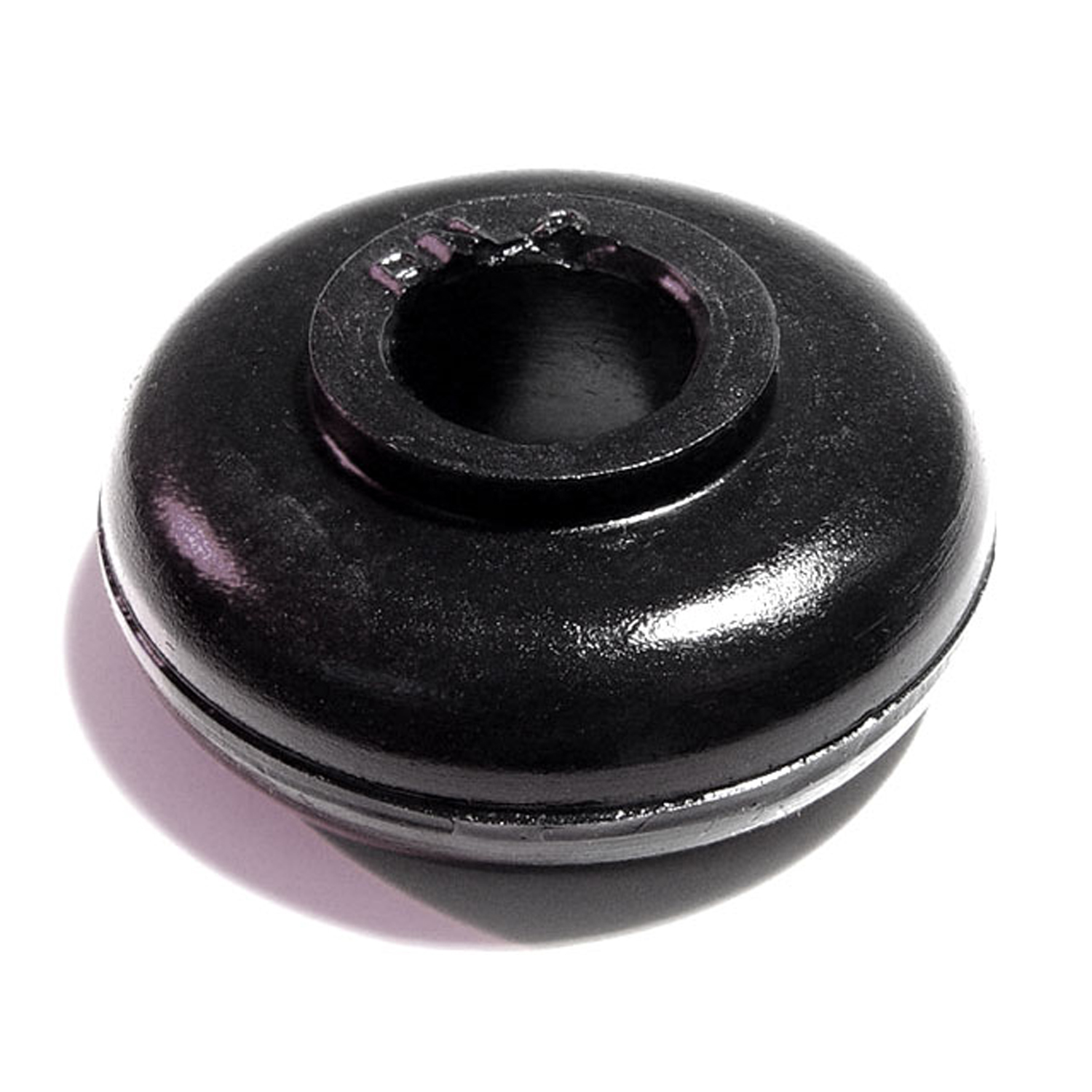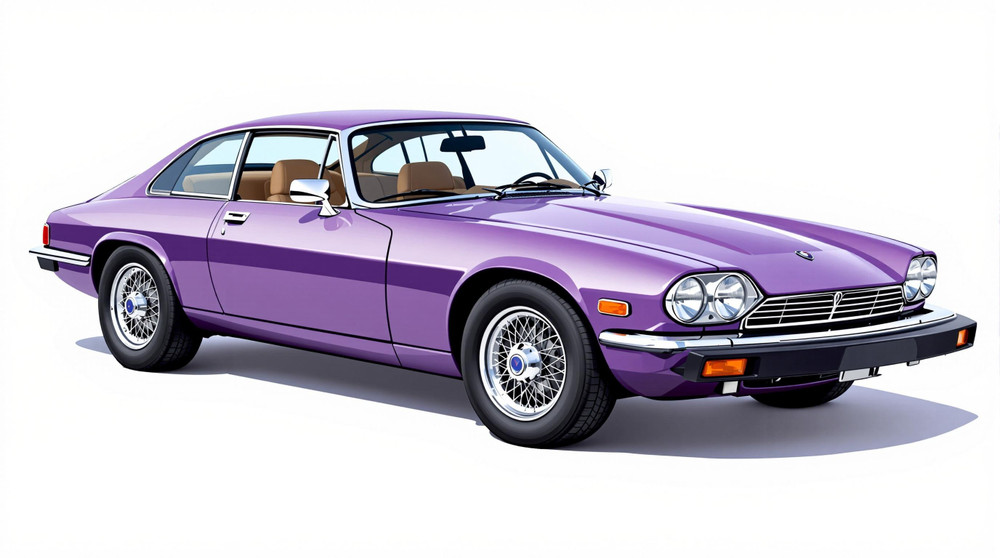Image of 1976 Jaguar Xjs, Note: These illustrations use artistic license and may differ from actual historical models.
Performance Metrics
Fundamental Metrics
Emotional Appeal
MMP Rating
| Engine Specifications | |
|---|---|
| Engine Options: | V12 |
| Displacement Range: | 5.3L |
| Horsepower Range: | 244-285 hp |
| Torque: | 320-345 lb-ft |
| Compression Ratio: | 9.0:1 |
| Ignition System: | Electronic |
| Cooling System: | Liquid-cooled |
| Performance Specifications | |
| 0-60 Time: | 7.6 seconds |
| 1/4 Mile Time: | 15.6 seconds |
| Top Speed: | 143 mph |
| Transmission and Drive | |
| Drive Type: | RWD (Rear Wheel Drive) |
| Transmission Type: | 3-speed automatic or 4-speed manual |
| Fuel and Efficiency | |
| Fuel System Type: | Fuel Injection |
| MPG: | 12-15 mpg |
| Dimensions and Brakes | |
| Brakes: | Disc Brakes |
| Wheelbase: | 102.8 inches |
| Weight: | 4,600 lbs |
Note: Specifications for classic cars are given to the best of our ability, considering the limited and variant data available.
1976 Jaguar XJS: A Grand Tourer That Redefined Elegance
The 1976 Jaguar XJS is not merely a car; it's a statement of luxury and performance wrapped in a silhouette that has captivated enthusiasts for decades. Born from the storied British manufacturer Jaguar Cars, the XJS was introduced to succeed the iconic E-Type. This grand tourer carved its niche in the automotive world, combining opulence with power in a way that few other vehicles of its era could match. A unique fact that entices Jaguar aficionados is that the XJS was one of the longest-running models in the company's history, spanning over two decades with continuous improvements and refinements.
Design and Innovation
The exterior styling of the 1976 Jaguar XJS exudes a sense of timeless grace, with its long bonnet, flying buttress C-pillars, and a distinctively sleek profile. The interior is equally impressive, featuring sumptuous leather and fine wood veneers that epitomize British craftsmanship. For its time, the XJS was a technological marvel, boasting advanced features such as fuel injection and sophisticated independent rear suspension. Color options ranged from classic British Racing Green to more flamboyant shades like Signal Red, with the latter often catching the eye of those wanting to make a bolder statement. While coupes were more common, the most iconic body style remains the two-door fixed-head coupe with its unmistakable blend of sportiness and elegance.
Historical Significance
The 1976 Jaguar XJS left an indelible mark on automotive design, setting new standards for GT cars. It stood out for its refinement and sophistication at a time when raw power often took precedence over comfort. Its lasting influence can be seen in how it bridged the gap between performance sports cars and luxury cruisers, inspiring future generations of grand tourers.
Performance and Handling
Underneath its hood lay a potent 5.3-liter V12 engine that propelled the XJS from 0-60 mph in under 8 seconds—a remarkable feat for its size and era. The top speed was equally impressive, flirting with the 150 mph mark. On winding roads or when gliding over imperfections in the tarmac, drivers praised its composed handling characteristics. The driving experience was quintessentially Jaguar: a symphony of engine notes complementing a ride that was both spirited and smooth.
Ownership Experience
The 1976 Jaguar XJS found its place as both a daily driver for the well-heeled and as a cherished show car for collectors. While maintenance could be demanding due to its complex engineering, many owners found joy in preserving this piece of automotive history. Reliability has improved over time as enthusiasts have learned to address common issues inherent to vintage vehicles.
Fun Facts
This grand tourer has graced the garages of celebrities and even royalty, adding to its allure. Although not known for breaking speed records, it did set standards for luxury GT cars. The XJS also had its share of screen time in television shows and movies, further cementing its cultural impact despite criticisms about its weight and fuel consumption.
Collector's Information
Today, the value range for a well-preserved 1976 Jaguar XJS can vary significantly based on condition, mileage, and provenance. Production numbers were relatively low compared to mass-market cars, adding to their rarity; it's estimated that several thousand were produced in '76. As classic car values fluctuate, the XJS has seen an appreciation trend among collectors who value its blend of performance and luxury.
Conclusion
The 1976 Jaguar XJS is more than just a vehicle; it's an emblematic chapter in Jaguar's storied legacy—a blend of artistry and engineering prowess that continues to enchant classic car enthusiasts around the globe. Whether admired on show fields or enjoyed on open roads, this grand tourer stands as a testament to an era when cars were as much about passion as they were about transportation.
1976 Jaguar Xjs Catalog of Parts
 1976 Jaguar XJS Roll Bar Bushing. 1/2" high, with 1/2" hole. Each-BN 2Roll Bar Bushing. 1/2" high, with 1/2" hole. Each
1976 Jaguar XJS Roll Bar Bushing. 1/2" high, with 1/2" hole. Each-BN 2Roll Bar Bushing. 1/2" high, with 1/2" hole. Each 1976 Jaguar XJS Spark plug wire boot. Exclusive Metro part-RP 1-KSpark plug wire boot. Exclusive Metro part. Fits on the distributor cap end. Note: looks similar to coil boot, but is physically smaller. Replaces OEM# CO 2609. Each.
1976 Jaguar XJS Spark plug wire boot. Exclusive Metro part-RP 1-KSpark plug wire boot. Exclusive Metro part. Fits on the distributor cap end. Note: looks similar to coil boot, but is physically smaller. Replaces OEM# CO 2609. Each.Why Choose Metro?
For over 100 years, Metro Moulded Parts has been the pinnacle of quality in classic car restoration parts. Our commitment to precision and authenticity in every component ensures a perfect fit and an OEM-level appearance.
- Expert Craftsmanship & Quality: Each part is a testament to our dedication to reliability and perfection, crafted from original designs and thoroughly tested.
- Advanced Technology: We use cutting-edge techniques to create flawless, long-lasting parts that surpass others in performance.
- SuperSoft Sponge – The Ultimate Door Seal: Not only are our door seals 30% softer than competitors', but they're also guaranteed to never leak. They effectively reduce wind and road noise, enhancing your classic car's comfort and driving experience.
- Proudly American: Our parts are a product of American craftsmanship, made in the USA with a spirit of excellence and heritage.
- Unrivaled Warranty: We back our products with a 30-year industry-leading warranty, a testament to our confidence in their quality.
Join us in preserving the legacy of classic cars with parts that are crafted for perfection, not just made.

